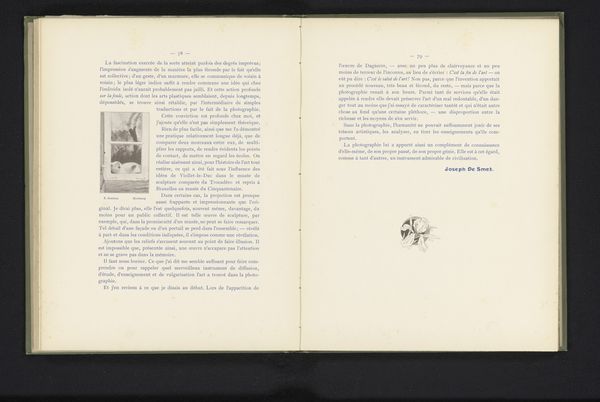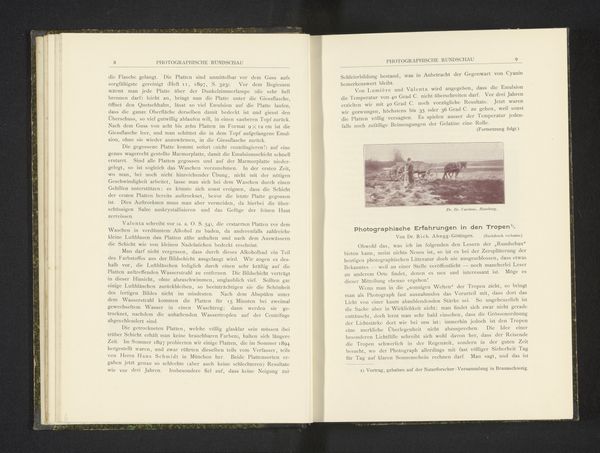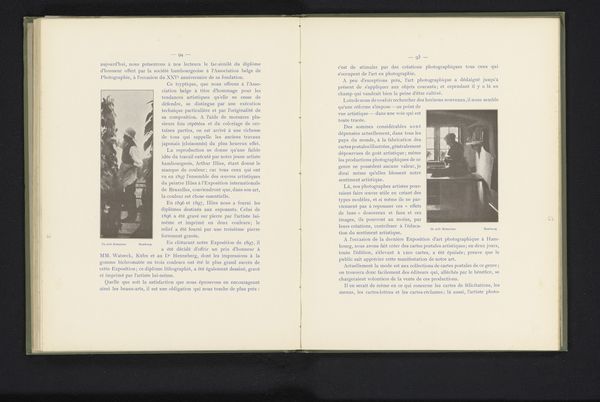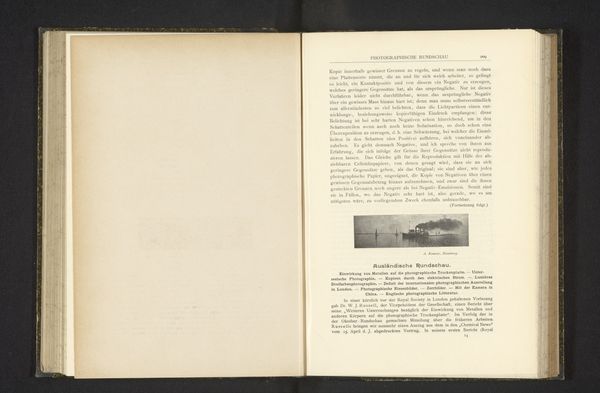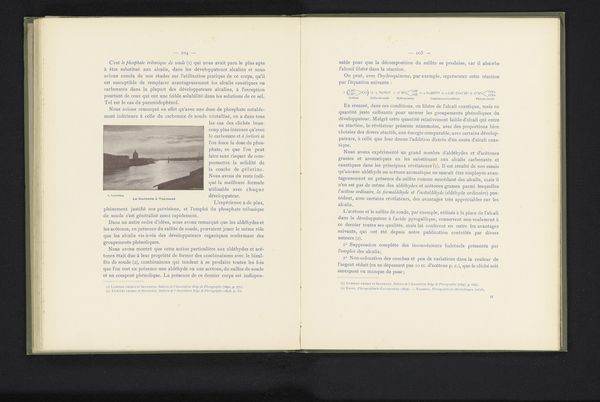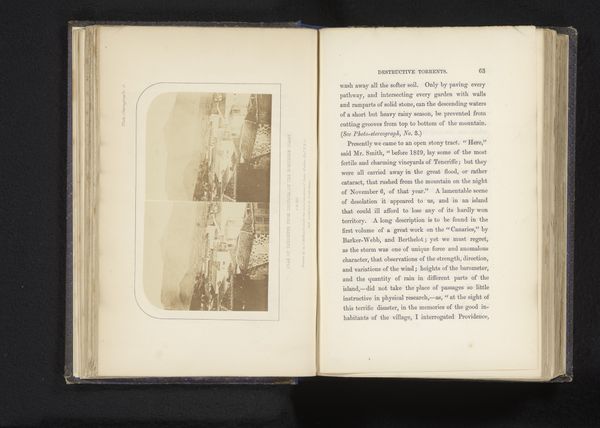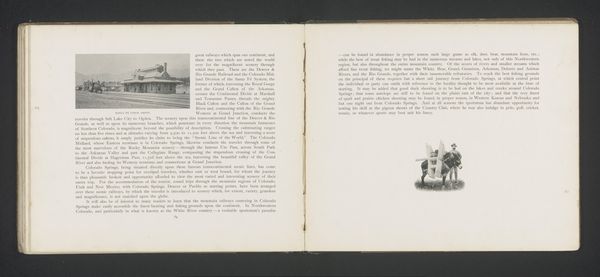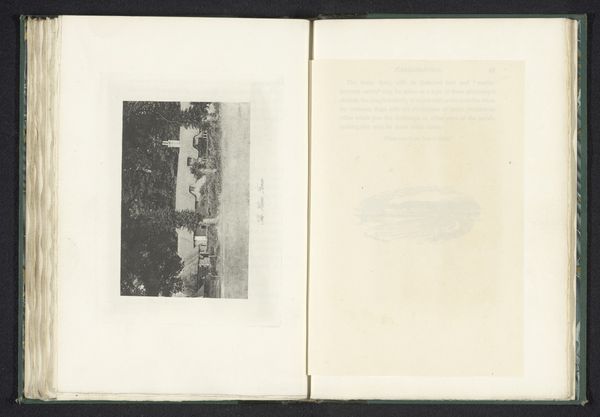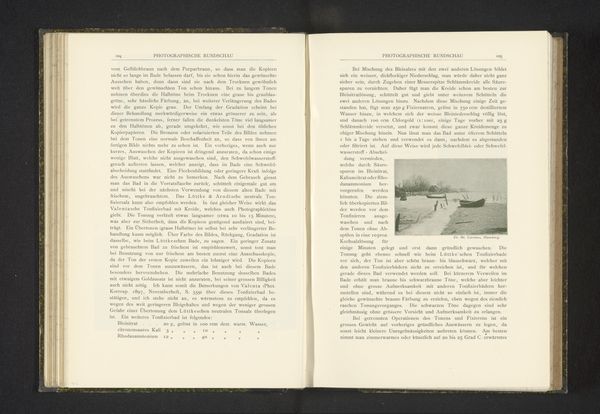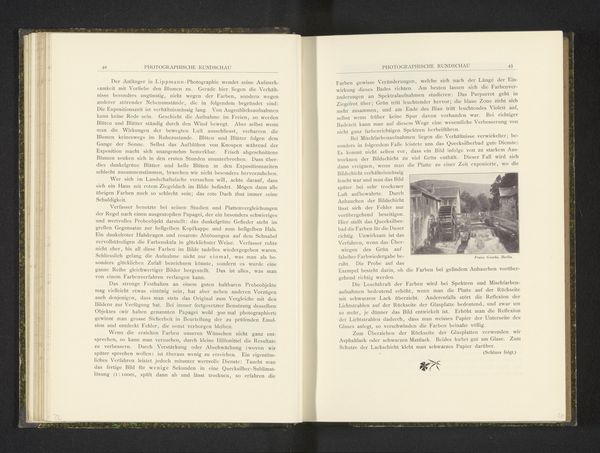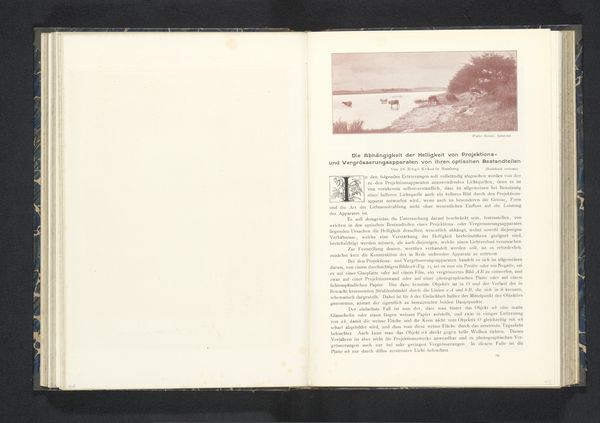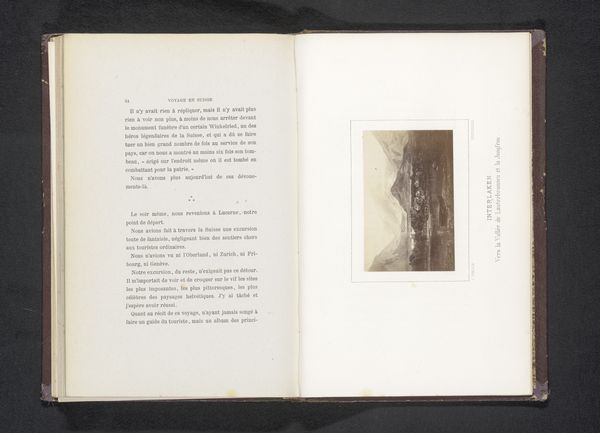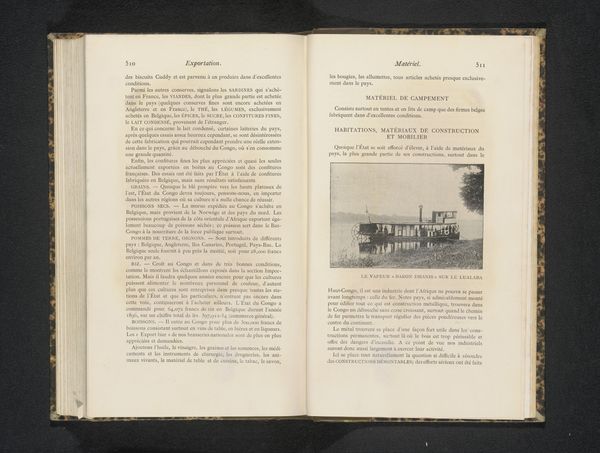
print, textile, photography, collotype, photomontage
# print
#
book
#
textile
#
photography
#
collotype
#
photomontage
Dimensions: height 80 mm, width 64 mm
Copyright: Rijks Museum: Open Domain
Curator: Looking at this, I feel a profound stillness. The monochrome palette lends itself to a mood of quiet contemplation. Editor: Yes, a rather serene depiction given that we are observing Th. u. O. Hofmeister's "Drie onbekende mannen die ijsvissen," or "Three Unknown Men Ice Fishing," created before 1898. The photomontage combines photography and collotype elements. The texture seems quite rough, almost palpable. Curator: I see in the activity a depiction of men's work in the context of limited possibility and stark conditions. I wonder what we might learn from reading it against, say, current labor movements or even environmental precarity narratives. Editor: I agree, and consider how that scene gets realized materially. Hofmeister used photography to document the act of ice fishing, later using the collotype process—a method of creating prints from gelatin surfaces—to reproduce the images. Curator: Right. This merging of photographic realism and printing speaks to the democratizing impulses of the medium at that moment in history and invites analysis around access, knowledge sharing, the status of the art object. Who were these fishermen? Did Hofmeister know them personally, or were they mere subjects for study? How did the labor of the artist relate to their manual labor? Editor: These are poignant questions. The work itself, existing within the context of a book, further emphasizes accessibility and wider distribution to diverse readers. Curator: The act of ice fishing as captured here gains significance. It’s not merely about sustenance; it's a relationship with nature, a demonstration of human resilience under harsh conditions. I'm compelled to re-contextualize this piece considering post-colonial discussions regarding ecology and labor. Editor: Thinking of the composition itself and the ways Hofmeister combined methods highlights craft. This complicates traditional divides, highlighting what fine art and "mere" production mean within rapidly industrializing visual cultures. Curator: Precisely. Art like this helps us not only perceive what our forebears observed, but consider our role within systems and historical flows. Editor: Indeed. "Three Unknown Men Ice Fishing" offers many access points to consider craft, labor, representation, and history.
Comments
No comments
Be the first to comment and join the conversation on the ultimate creative platform.
